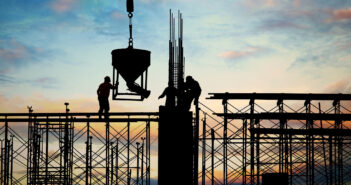
Provident Housing secures INR 1,150 crores investment from HDFC Capital
Provident Housing, a wholly owned subsidiary of Puravankara Limited has made a…

Provident Housing, a wholly owned subsidiary of Puravankara Limited has made a…

Global Capability Centres (GCCs) accounted for a share of one-third in the overall India office leasing in Jan- Mar ’24. Within the GCCs space take-up, E&M companies contributed to over one-fourth share, followed by automobile firms. Bangalore led the chart for GCC leasing, boasting a 60% share, followed by Hyderabad with 26% and Delhi-NCR with 9%. Notably, 38% of the large-sized deals (exceeding 100,000 sq. ft.) were secured by GCCs during this period, underscoring their significant impact on the office leasing landscape.

What is icing on the cake for the developers in these smaller towns now is the fact that they are getting the labour force at a much lower cost. Explaining this trend, Sandeep Agrawal, a property broker in Patna says that the labours were getting their daily wages in the Delhi NCR region in the range of INR 350-500, depending upon the project. But now they are more than willing to work at INR 250 in places like Patna, Kanpur, Kochi etc where they are stationed in proximity to their home towns and the cost of living is much lesser, compared to the metro cities.

The cost of doing business per square feet has always been challenging in the top 10 cities of India. The ever increasing migration for jobs in these cities have made the housing affordability even bigger challenge. Critics are not cynical when they question as to what extent and till when these cities will continue to be filled up like a soda bottle. Aren’t our metro cities on the verge of a population blast? Come 2021 and Track2Realty analysis believes the infamous Coronavirus in a strange way has shown the way forward.

Projects worth INR 4,64,300 crore for a total of 575,900 units are already significantly behind schedule. These 5,75,900 units have been stuck since 2013 or before. However, what is even more disturbing than these staggering number is the fact that in many of the states RERA has been diluted to the extent that it allows the erring developers with the existing projects to get away with the fault lines.

SOBHA Limited claims to have achieved best ever quarterly sales volume of 1.13 million square feet of Super Built up Area valued at INR 8.88 billion, with an average price realization of INR 7,830 per square feet during Q3-21. Sales volume, total sales value and Sobha share of sales value during Q3-21 were up by 27% ,29% , 28% respectively as compared to Q2-21.

Catering to India’s housing demand, SOBHA is the only Indian real estate company to make it to this prestigious list of growth drivers for the APAC region among other construction companies listed. The evaluation was based on companies having: revenue of at least $100,000 generated in 2015; revenue of at least $1m generated in 2018; being independent; headquartered in one of 11 territories in Asia-Pacific (Japan, South Korea, India, Australia, Hong Kong, Taiwan, Singapore, New Zealand, Malaysia, Indonesia and the Philippines) and whose revenue growth between 2015 and 2018 was primarily organic.

Track2Realty pan-India survey invites mall visitors across 20 cities to pick their choices for the top malls.

These are the findings of a pan-India survey by Track2Realty. The survey was aimed at assessing the track record of the Indian malls in terms of meeting the customer experiences and rating & ranking the best malls in the country. The survey was carried in 20 cities – Delhi, Gurgaon, Noida, Ghaziabad, Chandigarh, Amritsar, Mumbai, Pune, Kolkata, Bhopal, Raipur, Lucknow, Jaipur, Bhubaneswar, Ahmedabad, Bengaluru, Hyderabad, Chennai, Kochi and Coimbatore.

Lack of affordability in the larger cities is the primary hurdle to the largest investor base, and property investors are now looking at smaller towns and cities. However, their increasing bullishness on Tier 2 & 3 cities as against their tier 1 counterparts is not just on account of their relatively more affordable property prices, but also because of their better growth prospects.
